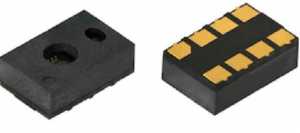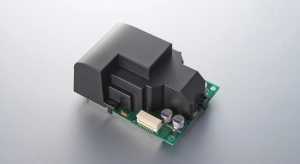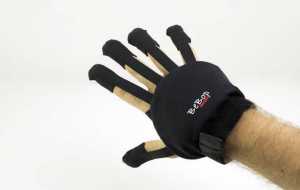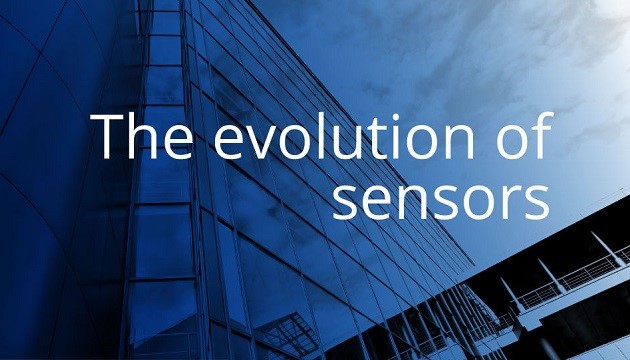The Sensor technology in the electronics stream has widened up, and is rolling out new inventions day by day for better products. Medical, industrial, educational, and for what not, sensors are used almost everywhere and there is not a single technological sector which is not dominated by sensors.
The life of the sensor technology is completely based upon us. Currently, there is a motto for sensors, the smaller, the better. Some sensors, which are about the size of a needle’s tip are developed by researchers. A manufacturer of low-power and ultrasonic 3D sensing products, has developed a novel millimeter-sized time-of-flight (ToF) sensor that uses extremely low power compared to the other ToF sensors in the market.
Smartphones are also loaded with at least dozens of sensors including a proximity sensor, fingerprint sensor, GPS, gyroscope, accelerometer, and barometer, and heart-rate sensor.
Major Developments in the Sensor Technology:
The electronics industry is soon to be revolutionized by the latest sensors, especially which are used in IoTs and wearables, be it a silent heart attack detector, which detects the protein level of a patient or a posture-correcting chair that alerts the occupant sitting in a wrong posture, both recently invented by Indian teenagers. Sensors play a vital role in electronic devices, and the application of sensors is ever-expanding along with the progress in science and technology.
As compared to the computers and communication devices markets, sensors are becoming the biggest and fastest growing markets. Sensors are found in smartphones, automobiles, security systems and even everyday objects like coffee makers. Apart from the consumer electronics, Internet of Things (IoT), medical, nuclear, defence, aviation, robotics and artificial intelligence, agriculture, environment monitoring and deep-sea applications, are the areas, where the sensors have an integral presence.
The shift to smarter sensors
Recently, we can witness a paradigm shift in the sensor industry with integration of new technologies to make sensors smarter and intelligent. Nowadays we see sensors integrated with many sensing elements and read-out circuitry come in a single silicon chip, which provides high accuracy and multiple functions. Manufacturers use advanced technologies and methods for signal processing and conversion. Latest sensors are more accessible, flexible and user-friendly.
Moreover, standard bus or wireless network interfaces are used by smart sensors to communicate with one another and with microcontrollers (MCUs). Data transmission is made easier by network interference while expanding the system. Sensor faults could be easily diagnosed by manufacturers with a guidance to users for troubleshooting them remotely through the computer network.
A smart sensor consists of a chain of analogue and digital blocks, each of which provides a specific function. Data processing and analogue-to-digital conversion (ADC) functionalities help improve sensor reliability and measurement accuracy.
Commenting on the latest technology and application in sensors, Business Development Manager of Omron,Manoj Kodakkatery said, “One of the sweeping trends across varied sensor segments is the rise in demand of ‘IoT based solutions’. Their role is to realize data collection and its effective utilization to impart intelligence to the device so that it delivers exceptional performance on the targeted parameters. OMRON has been working on expanding its offerings in the Sensors arena, of late, that have utility across varied industries like building automation, factory automation, home appliances, vending machines, robotics, automotive, energy and medical equipment. These are highly compact and durable sensors which when embedded in equipment/devices, collect data and contribute in the proper functioning of the complete solution. This is possible owing to the technologies they come imparted with, such as – human sensing, condition sensing, heat sensing, flow sensing, object sensing, distance sensing, vibration sensing to name a few”.
Latest types of Sensors:
There is a wide variety of sensors depending on the technology (analogue/digital) and applications. Some of the latest sensors including IoT sensors, pollution sensors, RFID sensors, image sensors, biometric sensors, printed sensors, and MEMS and NEMS sensors are emerged as a great evolution and are booming the electronics industry undoubtedly.
At the IESA event Makeathon, held on 14th December in New Delhi, the Chairman of IESA, Rajesh Ram Mishra, told about the latest sensor advancements, “As we move to the sensors, most of the sensors, broadly fall into two categories: one sensor is vision based sensor where we are either having a camera or we have the multispectral. Multispectral is also a camera, through which we can take the pictures from under different wavelengths and then we can create a signature which will say it is one’s picture because one’s body structure is like this, this is based on vision. Another type of sensor is the Ultrasound sensor, these are things which are providing one class of applications. Similarly, we have many applications which are MEMS based devices. Then we have the accelerometers, for identifying old people if somebody has fallen down, or if somebody not moving in the right way, so we can find them as their body moves in a particular direction.
Different sensors have different applications and because lot of sensors are getting into phones, consumer products, the prices of the sensors are running very cheap, those cheap sensor prices will drive many applications”.
IoT sensors
IoT sensors include temperature sensors, proximity sensors, pressure sensors, RF sensors, pyroelectric infrared (PIR) sensors, water-quality sensors, chemical sensors, smoke sensors, gas sensors, liquid-level sensors, automobile sensors and medical sensors.
These sensors are connected to a computer network for monitoring and control purposes. Using sensors and the Internet, IoT systems have wide applications across industries with their unique flexibility in providing enhanced data collection, automation and operation.
Recently, Vishay electronics has released a new proximity sensor VCNL36687S, which is designed to be used in smartphones, tablets, virtual reality / augmented reality (VR / AR) headsets, and other battery-operated devices.
Pollution sensors
Air pollution sensors are used to detect and monitor the presence of air pollution in the surrounding area. These are applicable for indoor and outdoor environments.
On asking about the latest pollution sensors, Omron’s Manoj Kodakkatery said, “Omron’s Air Quality Sensors have got a great role to play in tackling the air pollution problem. The sensors can detect particles up to 0.5 micron in size. They also have a very efficient air-sucking phenomenon and are quite compact in size owing to a unique optical design. All of this make them a great constituent of air purifiers, ventilation systems, air conditioners, and environmental monitors”.
“Omron’s environmental sensors can also add a relevant value by rendering intelligence to the machines and equipment to track various environment factors and parameters such as temperature, humidity, light, UV index, barometric pressure, noise, acceleration and VOC (Volatile Organic Compounds). They come with wireless communication functionality in an ultra-small footprint and can play a great role in monitoring the indoor and outdoor environment conditions at public places, work places and homes”.
RFID sensors
RFID chips are small as the size of rice grains can be inserted directly under the skin for use as ID cards. There is a trend to use RFID chips in many products including contactless banks cards and Oyster cards. There are also cases where chips are implanted in pets and cattle for monitoring.
Discussing about a different kind of latest application in the Sensor industry, Nagendra Singh, Director of Global Instrumentation commented, “We are developing inductive sensors for length measurement, and distance measurement. Basically, many places require distance to be measured, like if any part is moving mechanically, or the same part being developed, then it is required to measure its length. For example, if a spring is being developed, and we need to know the spring’s length, and at the same time it is moving, then the inductive sensors would help in the measurement of the spring”.
Wearable sensors
These sensors include GPS, inertial measurement unit (IMU) and optical sensors and medical sensors. With modern techniques and miniature circuits, wearable sensors can now be deployed in digital health monitoring systems. Sensors are also integrated into various accessories such as cloths, wrist bands, eyeglasses, headphones and smartphones. According to aIDTechEx report, optical, IMU and GPS sensors would dominate the sensors market in terms of revenue by 2022.
Recently, BeBop Sensors bagged Time Magazine’s Best Inventions 2018 Award for inventing Forte Wireless Data Glove. World’s first fully featured affordable wireless data glove which incorporateshaptics and super accurate rapid sensing is perfect for industrial, medical, human factors, virtual reality, gaming, and design sectors.
These gloves are created for over 15 hours of wireless use, ultra-comfortable, one-size-fits-all, and light-weightunlike any other gloves in the market.
Upcoming Sensor Technology in 2020:
- The unobservable sensing would break new ground in sensing biohazards, smells, material stresses, pathogens, level of corrosion and chemicals in material.
- Micro-sensor implants in patients would track the healing process for internal injuries, enable health care professionals to take remedial action based on continual data from the system.
- Biodegradable sensors would monitor soil moisture and nutrient content for optimum crop production.
- Self-powered sensors would be powered using the heat difference between the patient’s body and surrounding air find applications in medical care.
- Self-healing sensors would repair themselves in the event of disaster or in case of other structural disruptions.
- Live cell-based sensing, an amalgamation of sensor technology and living cells, would allow scientists to understand the biological effect of medicines, environment and biohazards.
- Sensor swarms would coordinate their activities, deciding what to measure and where through a self-learning system directing their movements and data collection.
- Smart dust, microscopic sensors would be powered by vibrations, monitor situations ranging from battlefield activities, structural strength of buildings and clogged arteries.
Talking about the upcoming Sensor Technology, Senior Technical Marketing Manager of STMicroelectronics commented, “Sensors are shaping business and lifestyles worldwide. These devices help to detect any change in electrical, physical, or any other quantities, by producing an output which indicates the change. The output is usually furnished in the form of an electrical or optical signal. The proliferation in the use of sensors within Indian market has encouraged both vendors and users to invest significantly towards the growth of this market”.
“Sensors can offer better results and more significant energy savings when they become a lot smarter – and ST is helping them move in that direction. One example is an inertial sensor that includes a Machine Learning Processor (MLP) and a Finite State Machine (FSM). A revolutionary aspect of this sensor is that it has a Machine Learning Processor baked into the sensor itself with up to eight configurable decision treesor Machine Learning Core”.
“Instead of using a host microcontroller (MCU) to run an algorithm and draw conclusions from the available data, which demands a lot of energy, the Machine Learning Core in the sensor can run an inductive algorithm at a fraction of the power consumption. As a result, the system can recognize specific activities, carry positions, or count steps, by simply observing the users’ movements and inferring from pre-defined patterns”.
Boom of the Indian Sensors Market
India sensors market is one of the fastest growing markets in Asia-Pacific. Focus of consumers is shifting to smart devices, due to rising security concerns and growing trend towards miniaturization, making an extensive use of various sensors, in particular, touch and image sensors. Country is witnessing growth of sensors market because of a wide contribution for the increment in sales of consumer electronics and medical devices. Moreover, the automation in manufacturing sector is being driven by growing need for energy efficiency and complying with related government regulations. As sensors help in reducing energy consumption and wastage, while also reducing maintenance costs, the manufacturers are increasingly installing sensors in their manufacturing units.
According to “India Sensors Market Forecast & Opportunities, 2020”, the country’s sensor market is projected to grow at a CAGR over 20% through 2020. Consumer electronics, automotive, industrial and healthcare sectors are the key application areas for sensors in the country. In addition, adoption of MEMS technology in sensors is growing across various new application segments.

